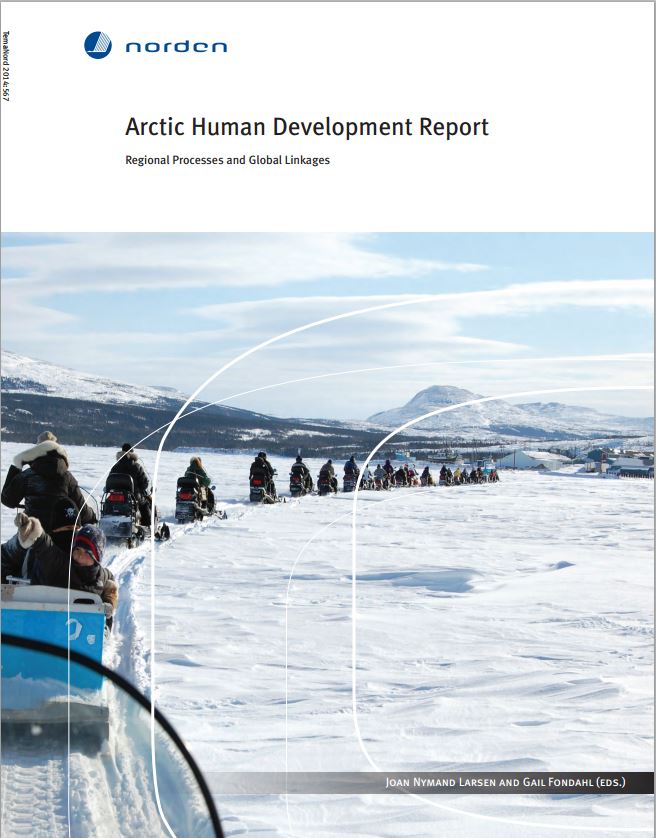The long-awaited second volume of the Arctic Human Development Report (2004) has been released. "Arctic Human Development Report : Regional Processes and Global Linkages" can be now downloaded for free at NORDEN.
As reported by the project leader, Dr. Joan Nymand Larsen, in the webpage of the "Stefansson Arctic Institute", "the purpose of the AHDR-II project – Arctic Human Development Report II: Regional Processes and Global Linkages – is to move the study of human development in the Arctic beyond the AHDR (2004) baseline, to providethe second assessment and synthesis report on the state of human development in the Arctic, and to contribute to our increased knowledge and understanding of the consequences and interplay of physical and social global change processes for human living conditions and adaptability in the Arctic, and to strengthen the competence and international leadership role in human dimension scientific assessments and research."
Here the main feautures of the volume from the Nordic Council of Ministers Secretariat webpage:
- Arctic Human Development Report : Regional Processes and Global Linkages
- Larsen, Joan Nymand (Editor)
- Fondahl, Gail (Editor)
- Nordic Council of Ministers, Nordic Council of Ministers Secretariat
The goals of the second volume of the AHDR – Arctic Human Development Report: Regional Processes and Global Linkages – are to provide an update to the first AHDR (2004) in terms of an assessment of the state of Arctic human development; to highlight the major trends and changes unfolding related to the various issues and thematic areas of human development in the Arctic over the past decade; and, based on this assessment, to identify policy relevant conclusions and key gaps in knowledge, new and emerging Arctic success stories.
The production of AHDR-II on the tenth anniversary of the first AHDR makes it possible to move beyond the baseline assessment to make valuable comparisons and contrasts across a decade of persistent and rapid change in the North. It addresses critical issues and emerging challenges in Arctic living conditions, quality of life in the North, global change impacts and adaptation, and Indigenous livelihoods.
The assessment contributes to our understanding of the interplay and consequences of physical and social change processes affecting Arctic residents' quality of life, at both the regional and global scales. It shows that the Arctic is not a homogenous region. Impacts of globalization and environmental change differ within and between regions, between Indigenous and non-Indigenous northerners, between genders and along other axes.
Copenhagen: Nordisk Ministerråd, 2015. 500 p.
Series
TemaNord, ISSN 0908-6692 ; 2014:567
National Category
Social Sciences
Research subject
Arctic, Globalisation
Identifiers
URN: urn:nbn:se:norden:org:diva-3809
DOI: 10.6027/TN2014-567
ISBN: 978-92-893-3881-3
ISBN: 978-92-893-3883-7
OAI: oai:DiVA.org:norden-3809
DiVA: diva2:788965
Available from2015-02-17 Created:2015-02-17 Last updated:2015-02-17
Source: Nordic Council of Ministers and Stefansson Arctic Institute

